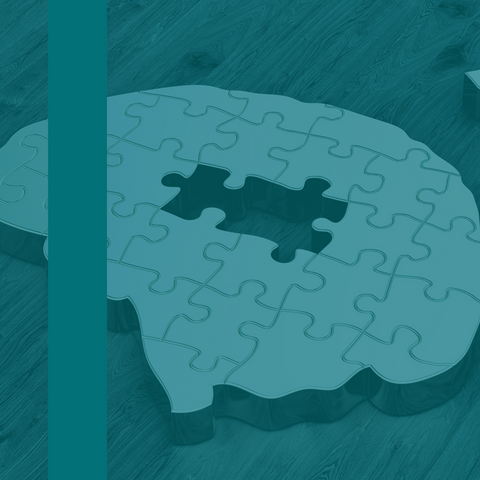
Cognitive biases are prevalent human tendencies that can significantly influence how we think, make decisions, and act in various ways [1-3].
In the setting of health and wellness, these biases can have a far-reaching impact [4], both positive and negative [5]. For example, we might overestimate our risk of illness or favor information that confirms our pre-existing beliefs on certain matters. Oftentimes, evidence against one’s position is selectively disregarded [6]. Understanding these cognitive biases is therefore fundamental for making well-informed decisions in support of optimal health and wellness.
We’ve taken a general look at some of the top cognitive biases you’re likely to come across (or be vulnerable to!) in a previous blog article, but in today’s article, we will look at seven cognitive biases that can be found specifically in the realm of health and wellness, using the latest research evidence.
Confirmation Bias
Confirmation bias is a common cognitive bias where people have a proclivity to value information that supports their pre-existing beliefs or hypotheses. This bias can affect how we interpret the findings of medical research, self-diagnose, or choose between treatment options.
A web-based study from 2014 showed that participants had a clear bias toward psychotherapy compared with pharmacotherapy for the treatment of depression, when in actuality the scientific evidence indicates that both types of treatment are about equally effective [7].
In the wake of COVID-19, confirmation bias has been shown in research investigating people with both pro- and anti-vaccination attitudes, suggesting that people misinterpret evidence about vaccines in ways that align with their fundamental beliefs [8].
Anchoring Bias
Anchoring bias occurs when we tend to rely too heavily on the first piece of information we come across and use it to make decisions irrespective of its relevance [3,9,10]. This initial anchoring affects the adjustment to information that is obtained later on. In the health and wellness realm, anchoring bias might affect the interpretation of test results and/or decisions that may be made with respect to treatment avenues.
For example, in congestive heart failure (CHF) patients presenting to the emergency department with shortness of breath, physicians were less likely to test for a pulmonary embolism when they had initial awareness of their CHF diagnosis [10]. This “anchoring” on early information led to the delayed workup and diagnosis of the pulmonary embolism. It is therefore highly important to be aware of anchoring bias in order to avoid missing common but also rare conditions [11].
Overestimation of Risk Bias
The overestimation of risk bias occurs when we regard the likelihood of negative events to be higher than it actually is. This bias is prevalent in the health and wellness realms, wherein sensationalist media reports or anecdotal experiences can bring about a state of fear and apprehension about a given condition. This is particularly evident with respect to “1 in X” ratios that are often reported in media publications and articles. For example, although 1 in 12 and 3 in 36 are numerically equivalent, the use of the former brings about greater objective overestimation of numerical probability [12]. What’s more, people with lower levels of health literacy and numeracy were not more sensitive to this bias!
Bandwagon Effect
This one might be fairly evident, but here goes! The bandwagon effect refers to the tendency for people to adopt beliefs or behaviors as a consequence of their perceived popularity, such as their reception on social media and other forums for instance [13,14]. In health and wellness, this effect can influence all sorts of things, such as the foods we eat and the fitness and supplement trends that we follow. There is even evidence to suggest that the bandwagon effect increases acne treatment willingness in teenagers [15]!
Accessibility Bias
Accessibility bias comes about when we place greater emphasis or importance on information that is more readily available to us [16]. On the flip side, we tend to devalue information that is less accessible. In health and wellness, people might place greater worth on information sourced from easily accessible platforms such as blogs, news outlets, social media [17], and the like. To the lay person, peer-reviewed scholarly evidence is not always accessible, whereas for scientists/academics this is usually available from their institution. This is changing somewhat due to the drive for “open access” publishing in academia these days [18].
Lead Time Bias
Lead time bias refers to a distortion that overestimates the apparent time surviving with a disease due to bringing forward its time of diagnosis through early screening procedures [19]. Put simply, an earlier detection of cancer by screening creates a false impression of prolonged survival or slower progression of a disease.
Unless this “lead time” is accounted for, comparisons of screened and unscreened populations will be distorted, suggesting that screen-detected cancers have better survival when in actuality death occurs at the same point in time irrespective of screening.
The Dunning-Kruger Effect
In the age of social media, the Dunning-Kruger effect is rampant. In brief, this effect refers to the phenomenon whereby a person with only rudimentary knowledge or experience in a given field overestimates their abilities [20]. That is to say, there is a disconnect between one’s self-assessment and their objective results.
In the realm of health and wellness, many influencers demonstrate the Dunning-Kruger effect. Some lack the qualifications, accreditations, and other academic credentials to underpin their claims and/or neglect to provide evidence-based information on health and well-being.
Research shows that people with low health literacy tend to report equal or greater confidence in health knowledge than individuals with higher health literacy [21]. The effect has also been shown in medical trainees, who can demonstrate self-confidence whilst underperforming, whereas the inverse can also be true [22].
Therefore, an impartial and honest assessment of one’s own skills and abilities is absolutely necessary when searching for information and advice in the health and wellness space, as well as a thorough appraisal of the source of said information.
Summary
In today’s article, we discussed seven cognitive biases that are prevalent in the health and wellness sphere. These biases can dramatically affect our interpretation of research findings, news releases, social media posts, and government-approved statements.
It is important to understand cognitive biases to make rational and reasonable decisions about our own health and wellness, so that we can make truly informed choices for an optimal lifestyle.
References
[1] M.F. Loncharich, R.C. Robbins, S.J. Durning, M. Soh, J. Merkebu, Cognitive biases in internal medicine: a scoping review, Diagnosis (Berl). 10 (2023) 205–214. https://doi.org/10.1515/dx-2022-0120.
[2] A.E. Allahverdyan, A. Galstyan, Opinion dynamics with confirmation bias, PLoS One. 9 (2014) e99557. https://doi.org/10.1371/journal.pone.0099557.
[3] S.A. Berg, J.H. Moss, Anchoring and Judgment Bias: Disregarding Under Uncertainty, Psychol Rep. 125 (2022) 2688–2708. https://doi.org/10.1177/00332941211016750.
[4] R. Featherston, L.E. Downie, A.P. Vogel, K.L. Galvin, Decision making biases in the allied health professions: A systematic scoping review, PLoS ONE. 15 (2020) e0240716. https://doi.org/10.1371/journal.pone.0240716.
[5] L. Savioni, S. Triberti, Cognitive Biases in Chronic Illness and Their Impact on Patients’ Commitment, Front Psychol. 11 (2020) 579455. https://doi.org/10.3389/fpsyg.2020.579455.
[6] M. Rollwage, A. Loosen, T.U. Hauser, R. Moran, R.J. Dolan, S.M. Fleming, Confidence drives a neural confirmation bias, Nat Commun. 11 (2020) 2634. https://doi.org/10.1038/s41467-020-16278-6.
[7] S. Schweiger, A. Oeberst, U. Cress, Confirmation bias in web-based search: a randomized online study on the effects of expert information and social tags on information search and evaluation, J Med Internet Res. 16 (2014) e94. https://doi.org/10.2196/jmir.3044.
[8] E. Malthouse, Confirmation bias and vaccine-related beliefs in the time of COVID-19, J Public Health (Oxf). 45 (2023) 523–528. https://doi.org/10.1093/pubmed/fdac128.
[9] A. Tversky, D. Kahneman, Judgment under Uncertainty: Heuristics and Biases: Biases in judgments reveal some heuristics of thinking under uncertainty., Science. 185 (1974) 1124– 1131. https://doi.org/10.1126/science.185.4157.1124.
[10] D.P. Ly, P.G. Shekelle, Z. Song, Evidence for Anchoring Bias During Physician Decision-Making, JAMA Intern Med. 183 (2023) 818–823. https://doi.org/10.1001/jamainternmed.2023.2366.
[11] R. Murani, R.H.K. Manocha, Avoiding anchoring bias in unexplained chronic pain: an unexpected diagnosis of synovial osteochondromatosis, BMJ Case Rep. 14 (2021) e240462. https://doi.org/10.1136/bcr-2020-240462.
[12] M. Sirota, M. Juanchich, J.-F. Bonnefon, “1-in-X” bias: “1-in-X” format causes overestimation of health-related risks, J Exp Psychol Appl. 24 (2018) 431–439. https://doi.org/10.1037/xap0000190.
[13] S. Wang, T.H. Chu, G. Huang, Do Bandwagon Cues Affect Credibility Perceptions? A Meta Analysis of the Experimental Evidence, Communication Research. 50 (2023) 720–744. https://doi.org/10.1177/00936502221124395.
[14] N. O’Connor, S. Clark, Beware bandwagons! The bandwagon phenomenon in medicine, psychiatry and management, Australas Psychiatry. 27 (2019) 603–606. https://doi.org/10.1177/1039856219848829.
[15] J.K. Bray, E.J. Masicampo, S.R. Feldman, The bandwagon effect increases acne treatment willingness in teenagers, J Am Acad Dermatol. 83 (2020) 1172–1174. https://doi.org/10.1016/j.jaad.2020.01.068.
[16] J. Firth, J. Torous, B. Stubbs, J.A. Firth, G.Z. Steiner, L. Smith, M. Alvarez-Jimenez, J. Gleeson, D. Vancampfort, C.J. Armitage, J. Sarris, The “online brain”: how the Internet may be changing our cognition, World Psychiatry. 18 (2019) 119–129. https://doi.org/10.1002/wps.20617.
[17] J.S. Hausmann, C. Touloumtzis, M.T. White, J.A. Colbert, H.C. Gooding, Adolescent and Young Adult Use of Social Media for Health and Its Implications, J Adolesc Health. 60 (2017) 714–719. https://doi.org/10.1016/j.jadohealth.2016.12.025.
[18] R. O’Hanlon, J. McSweeney, S. Stabler, Publishing habits and perceptions of open access publishing and public access amongst clinical and research fellows, J Med Libr Assoc. 108 (2020) 47–58. https://doi.org/10.5195/jmla.2020.751.
[19] R.J. Jansen, B.H. Alexander, K.E. Anderson, T.R. Church, Quantifying lead-time bias in risk factor studies of cancer through simulation, Ann Epidemiol. 23 (2013) 735–741. https://doi.org/10.1016/j.annepidem.2013.07.021.
[20] A. Muller, L.A. Sirianni, R.J. Addante, Neural correlates of the Dunning-Kruger effect, Eur J Neurosci. 53 (2021) 460–484. https://doi.org/10.1111/ejn.14935.
[21] B.E. Canady, M. Larzo, Overconfidence in Managing Health Concerns: The Dunning-Kruger Effect and Health Literacy, J Clin Psychol Med Settings. 30 (2023) 460–468. https://doi.org/10.1007/s10880-022-09895-4.
[22] M. Rahmani, Medical Trainees and the Dunning-Kruger Effect: When They Don’t Know What They Don’t Know, J Grad Med Educ. 12 (2020) 532–534. https://doi.org/10.4300/JGME-D-20-00134.1.





Comments (0)
There are no comments for this article. Be the first one to leave a message!